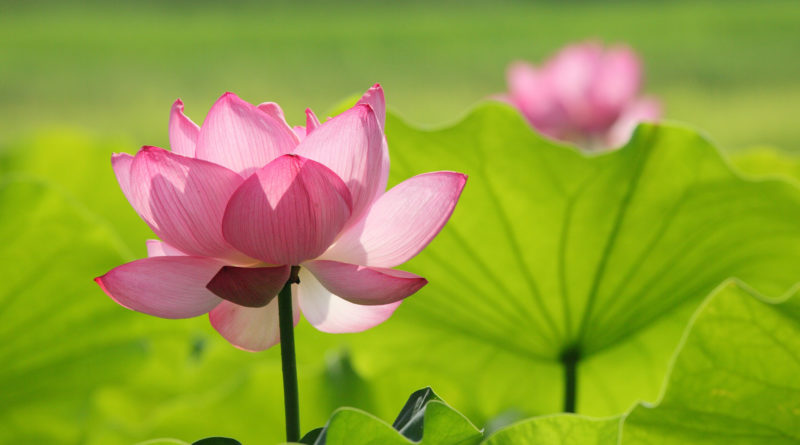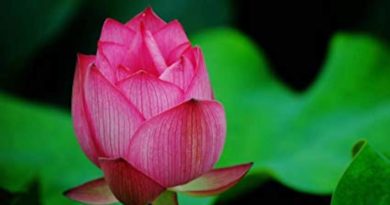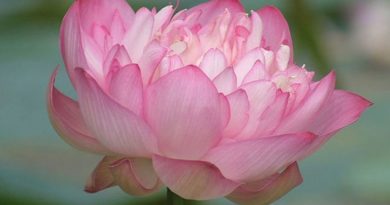GUIDE TO TIPITAKA – CHAPTER 3: WHAT IS SUTTANTA PITAKA?
GUIDE TO TIPITAKA – CHAPTER 3: WHAT IS SUTTANTA PITAKA?
The Suttanta Pitaka is a collection of all the discourses in their entirety delivered by the Buddha on various occasions. (A few discourses delivered by some of the distinguished disciples of the Buddha, such as the Venerable Sariputta, Maha Moggallana, Ananda, etc., as well as some narratives are also included in the books of the Suttanta Pitaka.) The discourses of the Buddha compiled together in the Suttanta Pitaka were expounded to suit different occasions, for various persons with different temperaments. Although the discourses were mostly intended for the benefit of bhikkhus, and deal with the practice of’ the pure life and with the exposition of the Teaching, there are also several other discourses which deal with the material and moral progress of the lay disciples.
The Suttanta Pitaka brings out the meaning of the Buddha’s teachings, expresses them clearly, protects and guards them against distortion and misconstruction. Just like a string which serves as an plumb-line to guide the carpenters in their work, just like a thread which protects flowers from being scattered or dispersed when strung together by it, likewise by means of’ suttas, the meaning of Buddha’s teachings may be brought out clearly, grasped and understood correctly and given perfect protection from being misconstrued.
The Suttanta Pitaka is divided into five separate collections known as Nikayas. They are Digha Nikaya, Majjhima Nikaya, Samyutta Nikaya, Anguttara Nikaya and Khuddaka Nikaya.
(a) Observances and Practices in the Teaching of the Buddha
In the Suttanta Pitaka are found not only the fundamentals of the Dhamma but also pragmatic guidelines to make the Dhamma meaningful and applicable to daily life. All observances and practices which form practical steps in the Buddha’s Noble Path of Eight Constituents lead to spiritual purification at three levels:
Sila moral: purity through right conduct,
Samadhi: purity of mind through concentration (Samatha),
Panna: purity of Insight through Vipassana
To begin with, one must make the right resolution to take refuge in the Buddha, to follow the Buddha’s Teaching, and to be guided by the Samgha. The first disciples who made the declaration of faith in the Buddha and committed themselves to follow his Teaching were the two merchant brothers, Tapussa and Bhallika. They were travelling with their followers in five hundred carts when they saw the Buddha in the vicinity of’ the Bodhi free after his Enlightenment. The two merchants offered him honey rice cakes. Accepting their offering and thus breaking the fast he had imposed on himself for seven weeks, the Buddha made them his disciples by letting them recite after him:
“Buddham Saranam Gacchami (I take refuge in the Buddha).”
“ Dhamman Saranam Gacchami (I take refuge in the Dhamma ) “
This recitation became the formula of declaration of faith in the Buddha and his Teaching. Later when the Samgha became established, the formula was extended to include the third commitment:
“Samgha Saranam Gacchami. (I take refuge in the Samgha).”
(b) On the right way to give alms.
As a practical step, capable of immediate and fruitful use by people in all walks of life, the Buddha gave discourses on charity, alms-giving, explaining its virtues and on the right way and the right attitude of mind with which an offering is to be made for spiritual uplift. The motivating force in an act of charity is the volition, the will to give. Charity is a meritorious action that arises only cut of volition. Without the will to give, there is no act of giving. Volition in giving alms is of three types:
(i) The volition that starts with the thought ‘I shall make an offering’ and that exists during the period of preparations for making the offering – Pubba Cetana, volition before the act.
(ii) The volition that arises at the moment of making the offering while handing it over to the donee – Munca Cetana, volition during the act.
(iii) The volition accompanying the joy and rejoicing which arise during repeated recollection of or reflection on the act of giving – Apara Cetana, volition after the act.
Whether the offering is made in homage to the living Buddha or to a minute particle of his relics after his passing away, it is the volition, its strength and purity that determine the nature of the result thereof.
There is also explained in the discourses the wrong attitude of mind with which no act of charity should be performed.
A donor should avoid looking down on others who cannot make a similar offering; nor should he exult over his own charity. Defiled by such unworthy thoughts, his volition is only of inferior grade.
When the act of charity is motivated by expectations of beneficial results of immediate prosperity and happiness, or rebirth in higher existences, the accompanying volition is classed as mediocre.
It is only when the good deed of alms-giving is performed out of a spirit of renunciation, motivated by thoughts of pure selflessness, aspiring only for attainment to Nibbana where all suffering ends, that the volition that brings about the act is regarded as of superior grade.
Examples abound in the discourses concerning charity and modes of giving alms.
(c) Moral Purity through right conduct, Sila.
Practice of Sila forms a most fundamental aspect of Buddhism. It consists of practice of Right Speech, Right Action and Right Livelihood to purge oneself of impure deeds, words and thoughts. Together with the commitment to the Threefold Refuge (as described above) a Buddhist lay disciple observes the Five Precepts by making a formal vow:
(i) I undertale to observe the precept of abstaining from killings
(ii) I undertake to observe the precept of abstaining from stealing.
(iii) I undertake to observe the precept of abstaining from sexual misconduct.
(vi) I undertake to observe the precept of abstaining from telling lies.
(v) I undertake to observe the precept of abstaining from alcoholic drinks, drugs or intoxicants that becloud the mind.
In addition to the negative aspect of the above formula which emphasizes abstinence, there is also the positive aspect of sila. For instance, we find in many discourses the statement: ‘He refrains from killing, puts aside the cudgel and the sword; full of kindness and compassion he lives for the welfare and happiness of all living things.’ Every precept laid down in the formula has these two aspects.
Depending upon the individual and the stage of one’s progress, other forms of precepts, namely, Eight Precepts, Ten Precepts etc., may be observed. For the bhikkhus of the Order, higher and advanced types of practices of morality are laid down. The Five Precepts are to be always observed by lay disciples who may occasionally enhance their self-discipline by observing the Eight or Ten Precepts. For those who have already embarked on the path of a holy life, the Ten Precepts are essential preliminaries to further progress.
Sila of perfect purity serves as a foundation for the next stage of progress, namely, Samadhi – purity of mind through concentration-meditation.
(d) Practical methods of mental cultivation for develop ment of concentration, samadhi.
Mental cultivation for spiritual uplift consists of two steps. The first step is to purify the mind from all defilements and corruption and to have it focused on a point. A determined effort (Right Exertion) must be made to narrow down the range of thoughts in the wavering, unsteady mind. Then attention (Right Mindfulness or Attentiveness) must be fixed on a selected object of meditation until one-pointedness of mind (Right concentration) is achieved. In such a state, the mind becomes freed from hindrances, pure, tranquil, powerful and bright. It is then ready to advance to the second step by which Magga Insight and Fruition may be attained in order to transcend the state of woe and sorrow.
The Suttanta Pitaka records numerous methods of Meditation to bring about one-pointedness of mind. In the Suttas of the Pitaka are dispersed these methods of meditation, explained by the Buddha sometimes singly, sometimes collectively to suit the occasion and the purpose for which they are recommended. The Buddha knew the diversity of character and mental make-up of each individual, the different temperaments and inclinations of those who approached him for guidance. Accordingly he recommended different methods to different persons to suit the special character and need of each individual.
The practice of mental cultivation which results ultimately in one-pointedness of mind is known as Samadhi Bhavana. Whoever wishes to develop Samadhi Bhavana must have been established in the observance of the precepts, with the senses controlled, calm and self-possessed, and must be contented. Having been established in these four conditions he selects a place suitable for meditation, a secluded spot. Then he should sit cross-legged keeping his body erect and his mind alert; he should start purifying his mind of five hindrances, namely, sensual desire, ill will, sloth and torpor, restlessness and worry, and doubt, by choosing a meditation method suitable to him, practising meditation with zeal and ardour. For instance, with the Anapana method he keeps watching the incoming and outgoing breath until he can have his mind fixed securely on the breath at the tip of the nose.
When he realizes that the five hindrances have been got rid of, he becomes gladdened, delighted, calm and blissful. This is the beginning of samadhi, concentration, which will further develop until it attains one-pointedness of mind.
Thus one-pointedness of mind is concentration of mind when it is aware of one object, and only one of a wholesome, salutary nature. This is attained by the practice of meditation upon one of the subjects recomended for the purpose by the Buddha.
(e) Practical methods of mental cultivation for development of Insight Knowledge, panna.
The subject and methods of meditation as taught in the suttas of the Pitaka are designed both for attainment of samadhi as well as for development of Insight Knowledge, Vipassana as a direct path to Nibbana.
As a second step in the practice of meditation, after achieving samadhi, when the concentrated mind has become purified, firm and imperturbable, the meditator directs and inclines his mind to Insight Knowledge, Vipassana Nana. With this Insight Knowledge he discerns the three characteristics of the phenomenal world, namely, Impermanence (Anicca), Suffering (Dukkha) and Non-Self (Anatta).
As he advances in his practice and his mind be comes more and more purified, firm and imperturbable, he directs and inclines his mind to the knowledge of the extinction of moral intoxicants, Asavakkhaya Nana. He then truly understands dukkha, the cause of dukkha, the cessation of dukkha and the path leading to the cessation of dukkha. He also comes to understand fully the moral intoxicants (asavas) as they really are, the cause of asavas, the cessation of asavas and the path leading to the cessation of the asavas.
With this knowledge of extinction of asavas he becomes liberated. The knowledge of liberation arises in him. He knows that rebirth is no more, that he has lived the holy life; he has done what he has to do for the realization of Magga; there is nothing more for him to do for such realization. The Buddha taught with only one object – the extinction of Suffering and release from conditioned existence. That object is to be obtained by the practice of meditation (for Calm and Insight) as laid down in numerous suttas of the Suttanta Pitaka.








